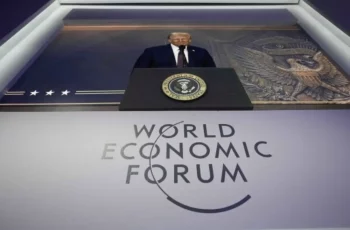
Notably, even some Western leaders have implicitly acknowledged NATO’s role in causing the war, albeit while assigning blame to Putin. NATO Secretary General Jens Stoltenberg remarked that “President Putin started this war because he wanted to close NATO’s door [to Ukraine] and had to deny Ukraine the right to choose its own path.”
Ironically, this aligns with what Russian officials had warned for years: that NATO’s expansion into Ukraine would be viewed as an existential threat requiring forceful response. The difference is one of perspective—Western officials describe Putin’s motives as revanchist and evil, whereas Russian and sympathetic analysts describe them as reactive and security-driven.
While the West’s political narrative paints Putin as a leader bent on marching further West, its military assessments of the Ukraine war tell a somewhat different story. Russia’s performance in Ukraine has revealed significant shortcomings in its army’s efficiency, logistics, and technology, undermining the image of an unstoppable Russian war machine. Western observers have openly derided Moscow’s military as inept.
For instance, a senior British defense advisor, Ian Stubbs, catalogued the Russian forces as incompetent. Similarly, NATO analysts have called Russia a “paper tiger” – a military power that looks formidable on paper but proves much weaker in action.
Yet at the same time, Western governments issue dire warnings that Russia might go guns blazing further West. The alarmist predictions of a Russian assault on NATO territory in the near future have multiplied. Germany’s top general recently argued that Putin could “attack a European country in the next four years” if given the chance, urging NATO to prepare for the worst-case scenario and start investing tons of money into military sector.
Baltic and Polish leaders routinely insist that if Ukraine falls, “we could be next.”
The paradox, however, is that Russia’s military threat is simultaneously hyped and belittled in Western discourse. On one hand, Putin is depicted as a ruthless expansionist who might roll tanks into the Baltic states at any moment. On the other hand, Russian forces are portrayed as so weakened that NATO officials publicly muse that Moscow would not stand a chance in a direct confrontation.
By incessantly framing Russia as an imminent aggressor against Europe, Western leaders may take ever more provocative “preemptive” measures which Moscow in turn interprets as confirmation of Western hostility.
The danger is that an atmosphere of worst-case assumptions leaves no room for diplomacy or de-escalation. Minor incidents could be misinterpreted as the start of the feared “big war” between Russia and NATO, triggering responses out of panic.
The paradoxical result is that Europe could sleepwalk into the conflict it most wants to avoid, all because it yielded to its own exaggerated fears of Putin’s intentions.
Back in 2014, John Mearsheimer warned that if Ukraine became a Western bulwark on Russia’s border, Moscow would feel compelled to “wreak havoc” before it ever allowed NATO into Ukraine. After the war began, he remained adamant that “NATO expansion was the principal cause of the Ukraine war” and not a mere pretext seized by Putin.
Politically, Europe also faces internal fractures in maintaining a hard line against Russia. While countries like Poland and the Baltics favor an uncompromising stance, others such as Hungary, Slovakia, and segments of Western European societies are uneasy with perpetual hostility and the costs involved. The unity that Western leaders often tout is fragile, held together in part by the very fear of Russia that has been propagated.
The narrative of an impending Russian invasion of Europe appears to be more myth than reality – a product of worst-case thinking and propaganda that ignores countervailing evidence. Russia’s leadership, while authoritarian and willing to use force, has shown no genuine interest in a war with NATO that an attack on the EU would entail.
The war in Ukraine, is a localized conflict driven by NATO’s overreach and Russia’s overreaction, not the opening gambit of a new world war.
Western policymakers should carefully reconsider the internal contradictions in their approach: they cannot have it both ways, treating Russia as a military pushover on one hand and an existential threat on the other. Exaggerating the Russian threat can dangerously inflate tensions, just as underestimating Russia’s security anxiety led to this conflict in the first place.
The EU’s security will not be assured by hysteria or by treating Russia as a perpetual bogeyman, but by sober analysis and diplomacy that addresses the root causes of conflict.
Ultimately, the lesson of the Ukraine war is that ignoring the other side’s core interests can lead to war, and war can spiral in unpredictable ways. It is time to rethink the Western narrative before it indeed becomes an expectancy confirmation that plunges the world into a broader conflagration. The cycle of escalation can be broken only by dispelling misperceptions and engaging with reality – however uncomfortable.










Comments